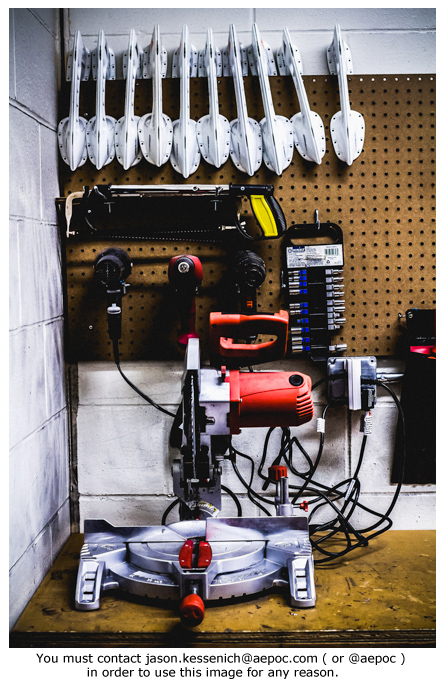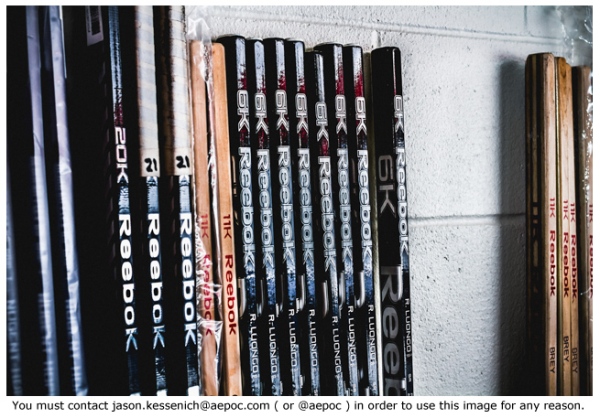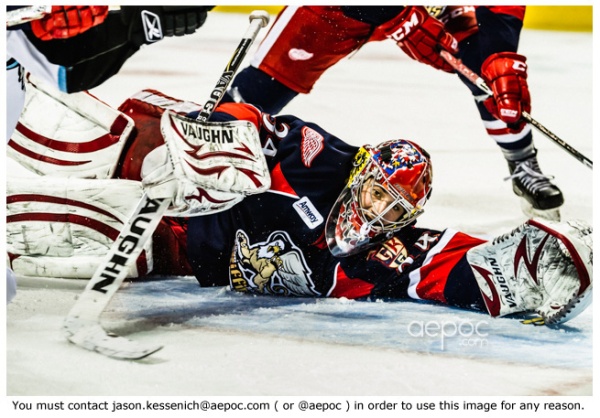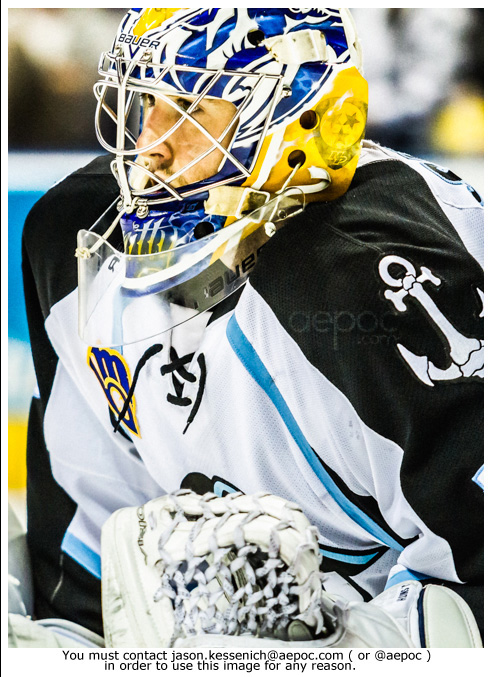While searching google today, I found an article written by Scott Kelby about his findings on photographing hockey. Scott is an outstanding pro photographer, and trainer of all things Photoshop. Check out his images here, and his Photoshop training here.
Below is the article he wrote. Please also view the article on his site here.
_______________________
Welcome to my world (well, as of late).
This is the small hole in the glass you get to shoot through when you’re shooting hockey (The NHL made the holes smaller recently to protect the photographers and players). The one here is from Saturday night at the Tampa Bay Times Forum (the arena where the Tampa Bay Lightning play their home games).
I’ve talked with other photographers shooting hockey, and they tell me they would kill to have any hole in the glass, because they have to shoot through the glass, which is often 1-inch thick and almost guarantees their shots won’t be nice and sharp, so I really shouldn’t complain.

Here’ the view if you angle your camera in that hole as far as you possibly can and shoot blindly down the rink (I say blindly, because it would be kinda hard to fit your head in a position that would actually let you look through the viewfinder, but I thought I’d at least show that not matter what, you’re not getting a shot of the other goal, so you’re only going to get the goal you’re positioned right in front of).
The Challenge (Warning: football metaphor coming):
Shooting from the position I was assigned (the shooting positions are assigned before game time by the team photographer, and you stay in that position the entire game), it lets you basically shoot from the back of the goal you’re in front of to the blue line (before you reach center ice). In football terms, that would be like having to shoot from the 5-yard line all game, and you can only shoot from the back of the goal to the 15 yard line. But, you can’t shoot all the end zone, because there’s a big net covering part of the end zone. Because you can only shoot when their action in front of you, it always seems like all the action is at the other goal (which you can’t shoot at all from your position, so you just sit quietly and watch the game).
Dave Black to the rescue
I had really been struggling through the last couple of games, and while I made some progress in game two, I wanted to continue improving (which I knew would eventually come the more games I shot), butDave Black (the magical wizard of sports photography) was down here at our studio taping some classes for Kelby Training Online, so I tracked him down to get some advice for shooting Saturday night’s Lightning game against the Washington Capitals, and of course, he was a huge help.
Football messed me up
Well, not just football, but for most sports we shoot wide open; usually at f/stops like f/2.8 or f/4, but Dave suggested that I try shooting at f/8, which kind of freaked me out, until he pointed out that in Hockey the fans are right at the glass, and unless I was zoomed in really tight, they were going to be in focus anyway (and I wasn’t going to get those super soft totally out-of-focus backgrounds with the crowd just 2 feet from the players on the boards, which totally made sense. He mentioned that I might have to crank the ISO and I might only get up to f/5.6 but that would help my focus issues, and boy did it ever. Huge difference!

(Above: An iPhone shot taken by the usher of me hand-holding my 200-400mm f/4 from the Mezzanine level shooting position. I had to bump the fill light massively as the original shot had me as a silhouette).
Take the 400mm! (I don’t need it! Yes you do!)
Besides shooting from ice level, we also have the option of shooting overhead (just over the glass) from the Mezzanine level, and I was going to take my 300mm, but Dave thought it might be too short and recommended that I take the 200-400mm instead. Of course, I briefly (and stupidly) argued with Dave, telling him low to the rink the mezzanine level actually was, but once I got there and started shooting (hand held no less—no monopod), I realized (as expected) that Dave was right. I shot out at 400mm the entire time.

It’s like cheating!
I will say this—shooting from above the glass, unobstructed, with a clear view of both goals and pretty much the entire rink was a blast. It was also pretty much like cheating, because you can see everything so darn well. You can follow the play pretty easily and you’re probably not going to miss a goal, so if reporting the news is your goal, it’s perfect. The only problem is; your shots look like you took them from the stands. The just don’t have the impact and feel the ones at ice level do, which explains why I was the only guy shooting from the mezzanine. So, while it great for catching everything, you’re not going to come back with shots that have the impact you want. I only stayed up there one period, and then I went back down to my tiny hole in the glass.

(Above: Lecavalier scores [note the puck behind the goalie] to help the Bolts win 2-1).
Progress Report
Dave’s tips (all of them, not just the two I mentioned here), really helped a lot, and I turned in my best shots yet (but of course, I’m still nowhere near happy with them, but at least things are going in the right direction). My timing is getting better and I’m getting just much more comfortable with my setting and surroundings.

Note to Self: Don’t look at their screens
In the photo room at the end of the night, I made the mistake at looking at Lightning Team Photographer Scott Audette’s shots as they were being uploaded (he is just sick at shooting hockey, and gets incredible shots despite the fact that he can’t shoot high speed because he’s firing strobes overhead. His timing and composition are astounding), and I saw some of Mike Carlson’s shots (he shoots for AP) and although he’s not firing strobes, his shots totally kick butt. He has the perfect shooting position on the ice — he’s behind the goal and to one side, and from there he can shoot end to end no sweat (with a 300mm lens pressed against the hole—he crops out the edges of the hole in post).
Looking at their shots can really bum you out, because I’m not getting shots anything like theirs, so I’ve got a long, long way to go, but hey, at least I made some progress (thanks to Dave and more practice), and that’s all I can hope for at this point in my hockey-shooting journey.
R65KR9DFBDRS
























